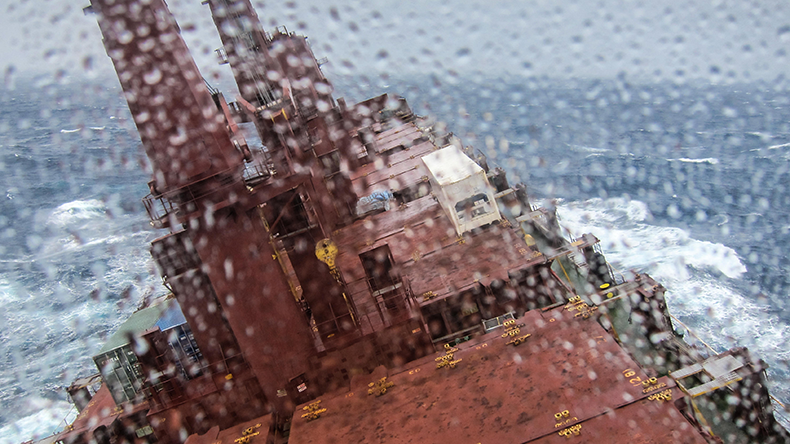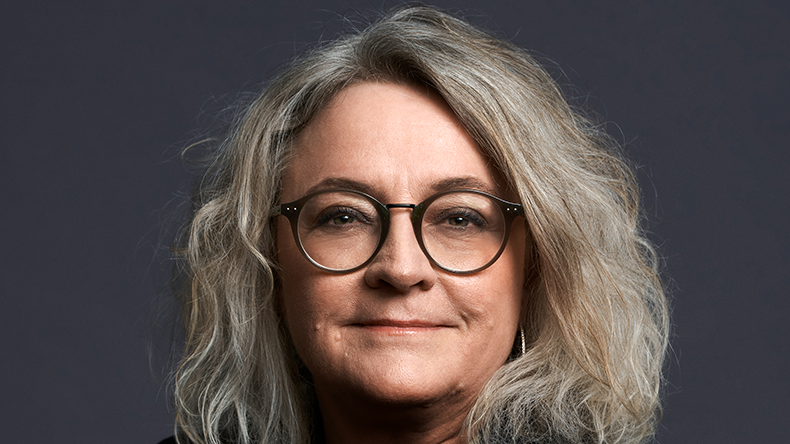Insurers can do more to improve safety in shipping
‘Whilst safety can be said to be the direct responsibility of the shipping companies, it is also a collective responsibility and that is why it is important for the insurance market to be part of the solution,’ chairman of Together in Safety, Dr Grahaeme Henderson, says
In almost every shipping incident, the issue is non-compliance with regulation. The procedures are in place, but the practice is lacking
Shipping lags behind many other industry sectors in terms of safety. According to a 2014 report on fatal accidents and injuries among merchant seafarers worldwide, a British seafarer was five times more likely to have a fatal accident than someone working in another “high-risk” industry, such as construction. The seafarer was also 21 times more likely to suffer a fatal accident on the job than someone in the general British workforce.
Since the publication of that report nearly 10 years ago, both the UK and European construction industries have improved their safety performance, making even starker the contrast between the shipping and construction industries, in terms of their respective focus on worker safety.
Other high-risk industries have recorded strong improvements as well, according to Dr Grahaeme Henderson, the chairman of Together in Safety, a coalition of shipping industry bodies that he initiated in 2019 to improve the safety performance of the shipping industry.
 Dr Grahaeme Henderson, chairman, Together in Safety
Dr Grahaeme Henderson, chairman, Together in Safety
Henderson, who previously served as chief executive of Brunei Shell Petroleum, global head of shipping at Shell International, and president of the UK Chamber of Shipping, points out that, over the past decade, there has been a reduction in passenger and worker fatalities in the commercial airline sector from around 700 to 100, annually, including a reduction in fatal worker accidents from around 30 to six, annually. For the UK rail industry, the number of fatal train accidents has reduced during the past 20 years to almost zero in recent years.
Before 2019, the issue of poor safety at sea had not been highlighted, he says. “Even now, there is little coverage in the shipping media. What was needed then, and now, is a strategic, analytical approach and an understanding of the realities.”
The realities behind the poor safety performance in shipping are many. They include the financial fortunes of the industry. Falling freight rates and increasing cost pressures because of inflation have had a significant impact on investment in this area, a situation not made any easier by another reality, the significant challenge faced by bodies such as Together in Safety in uniting the industry around safety.
According to Henderson, the realities also include getting the insurance sector to do more to make shipping a safer industry in which to work.
Here, Henderson has in his sights the two main sectors of the marine insurance market: the protection and indemnity (P&I) mutuals or clubs, where the vast bulk of maritime liability insurance, including death covers, are written, as well as the commercial hull, machinery and cargo insurers.
Too financially driven
There are exceptions, he says, but in general, the insurance market is too financially driven, and is not as focused on improving the shipping industry’s safety performance, as it should be. “While safety can be said to be the direct responsibility of the shipping companies, it is also a collective responsibility and that is why it is important for the insurance market to be part of the solution. I believe the insurance industry has room for improvement in their contribution to improving safety performance in the shipping industry,” he adds.
Insurance companies, he argues, are in competition with each other to win business. “And yet, no one wants a shipping incident which tarnishes the reputation of the industry. No one wants to see seafarers killed or injured, or to see the oceans polluted. So, there is a collective responsibility and safety is not a competition,” he says.
The P&I clubs, he says, have their loss prevention groups (LPGs), but there are limits to their resources and authority. “The safety advice videos and webinars provided by the LPGs to the shipping companies are not enough on their own.”
'No one wants a shipping incident which tarnishes the reputation of the industry. No one wants to see seafarers killed or injured, or to see the oceans polluted. So, there is a collective responsibility and safety is not a competition'
Dr Grahaeme Henderson, Together in Safety
For Henderson, the LPGs are not necessarily addressing the real root causes behind the general lack of leadership, incident prevention, and the care of seafarers.
For example, the insurance industry could have a critical role during hard market cycles such as the one being experienced by the shipping industry at present.
To date, the increases in premiums have not had a significant impact in highlighting the cost to both the shipping and insurance industries of not having effective safety regimes in place, says Henderson.
Shipping companies are simply paying those increases. “There needs to be an understanding on the part of the insurers and the shipping companies that the costs of claims and premiums will continue to rise with increasing scrutiny and expectation from the public and governments around compensation costs and for repairs to faulty equipment and machinery, which are often the cause of serious injuries and fatalities,” Henderson says.
According to Captain Rahul Khanna, global head of marine risk consulting at AGCS, this is starting to happen. AGCS, for example, is taking into account claims records as well as conducting detailed risk-quality assessments through its Allianz Risk Consulting (ARC) unit, which includes master mariners, engineers and supply chain professionals. Since 2014, the company has also published an annual safety and shipping review.
 Rahul Khanna, global head of marine risk consulting, AGCS
Rahul Khanna, global head of marine risk consulting, AGCS
There is always room for improvement, Khanna says. “As insurers, we can keep the pressure on sub-standard shipping and incentivise higher standards of safety. We know a large percentage of accidents and casualties are the result of human error, so we place great importance on identifying the risks associated with crewing and training, and that includes crew wellbeing. Hull and machinery insurers might not be able to access this information easily, but we source as much detail as possible to enable our risk assessment process to factor in such risks. ARC works very closely with underwriters to risk-assess these factors.”
There is no doubt that, to move forward, the industry needs to improve its monitoring and analysis of health and safety data. This, however, is much more challenging than it sounds.
To begin with, there is no global, comprehensive, reliable and accurate data source that includes shipping incidents, seafarer fatalities, suicides and serious injuries involving seafarers.
‘We know a large percentage of accidents and casualties are the result of human error, so we place great importance on identifying the risks associated with crewing and training, and that includes crew wellbeing’
Captain Rahul Khanna, AGCS
“The incident data that is available is of inconsistent quality and coverage, with regional disparities very apparent. There are also large numbers of seafarers that are reported as missing each year, which are not recorded as fatalities and are presumably lost at sea, thus hiding these tragedies from the data statistics,” Henderson says.
Under-reporting and misreporting of all types of incidents are a significant issue. The reason for this is there is no benefit to be gained by the company reporting an incident, according to Henderson.
“Reporting can attract increased attention from authorities, with the potential for costly delays and additional management time. It is a black mark that can influence chartering the ship in the future, damage a company’s reputation, increase insurance premiums, and negatively impact employee morale. Instead, not reporting the incident is often seen as the ‘easy’ option,” he argues.
Compliance
Few think increased regulation will help increase the shipping industry’s safety performance. Regulation has improved in recent years, but in almost every shipping incident, the issue is non-compliance, Henderson says. “The procedures are in place, but the practice is lacking. There is much corner-cutting and complacency, and a desire to get the job done as quickly as possible. Executives and leadership teams are often not aware of what is actually happening,” he adds.
Khanna agrees the implementation of regulations, in certain segments of the industry and in some geographical locations, is lacking. But he does not believe increasing regulation is the answer. “Ship owners and crew members are already burdened with a myriad of regulations. The implementation of these at a local level needs to improve – a task best managed by local administrations – but we, as an industry, can influence this to some degree.”
Justus Heinrich, global product leader for marine hull at AGCS, says it is important to be mindful of the significant differences in regulation that exist between marine industry segments, such as in a highly regulated segment like tankers, for example, compared with general cargo vessels.
 Justus Heinrich, global product leader for marine hull, AGCS
Justus Heinrich, global product leader for marine hull, AGCS
He notes that, in general, AGCS has seen an improvement in its shipping clients’ safety standards. “This is not only due to the increased use of technology over the past decade, but also because of improved standards in crew training and the greater implementation of lesson-learned processes, including near-miss reporting,” Heinrich says.
Technology
The potential of new technology to increase compliance and thereby the safety performance of the shipping industry is not in question. But while the industry has adopted technology in many areas, including the improved monitoring of engine performance and predictive maintenance, the pace of adoption has been slower than expected.
According to Khanna, some of the major ship owners have taken the lead and adopted the internet of things (IoT) in many processes, but this has not filtered down to the other end of the spectrum, where some owners do the bare minimum.
IoT container cargo monitoring is not new, but the industry has been slow to scale this technology, which can not only help avoid cargo losses, but also assist in fire detection.
“One of the most significant problems we face is misdeclaration of cargo by shippers – a contributing factor in many container ship fires. New tech is on hand to support in this area too. Advanced monitoring can make compliance with industry guidelines and requirements much easier, so we encourage the use of this,” Khanna says.
Although new technologies are supporting improvements in safety and will continue to do so, Heinrich warns that they are not a solution in themselves and can also introduce additional risks. “Without the right crew training, the best new technology will fail. In our experience, tools supporting the monitoring of vessel performance and supporting lessons-learned processes are good examples of technology’s potential to increase safety.”



